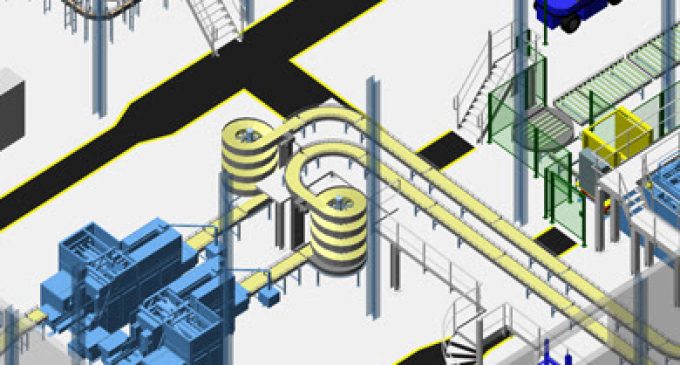A Quick Start for 3D Factory Projects

The use of 3D systems is becoming increasingly popular for factory layout. Companies want to benefit from the advantages of 3D design while keeping to their traditional 2D-based design process.
Many designers that are used to working in 2D can initially find it difficult to adapt to full-blown 3D design. 2D layout can also be faster. As a result, some 3D Factory Layout systems offer 2D-based layout as a support feature. This enables designers to layout their designs in 2D as usual, while at the same time, a 3D model is automatically created for them. At any time during the layout process the user can visualise and analyse their design in full 3D.
Size-independent, high-performance design
“Many companies in the UK today still use 2D CAD software as their primary tool for factory design. Although they are well aware of the benefits of a 3D approach, most have tried Mechanical 3D CAD systems and have quickly come up against their limitations, such as size constraints, poor performance, or inaccuracy,” explains Mark Simpson of engineering software developer CAD Schroer.
“Recent research in Germany tells a similar story, with most users quoting ease of use and quick implementation as some of the most important criteria when choosing a new system. This is exactly where M4 PLANT comes in; it not only offers easy implementation with its integrated 2D/3D approach, but also provides the right architecture and tools necessary for high performance, large-scale, standards-compliant design,” Mark Simpson continues.
A Quick Start for 3D Factory Projects
One system that combines factory layout with mechanical handling is M4 PLANT. Its Factory Layout and Mechanical Handling modules include all the functionality needed to quickly design large production lines, and even whole factories, in 3D. Furthermore, accurate parts lists and detailed 2D construction drawings can be automatically generated directly from the finished 3D design.
Companies looking for a quick start to their 3D factory projects should consider using 2D-based design systems for layout, as this offers an efficient and cost-effective way to get started quickly.



























